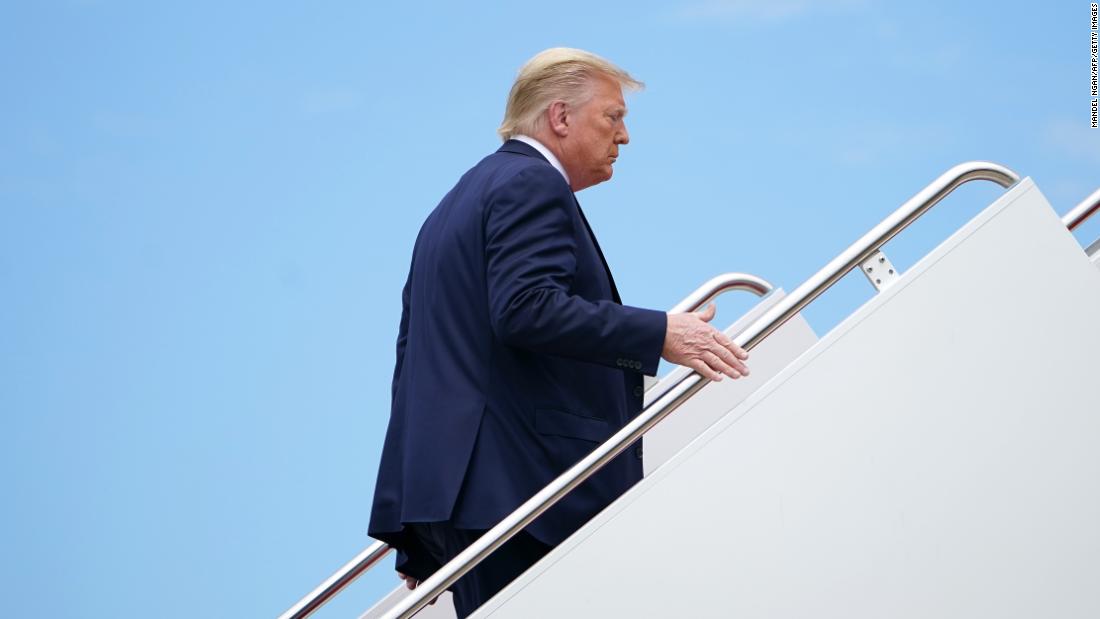[ad_1]
Holding a rally on that day was viewed as yet another affront by Trump, who has so far refused to engage in any meaningful way in the profound conversation about systematic racism unfolding in this country.
After weeks of divisive rhetoric and demands for the nation’s governors to “dominate” the protesters in the streets with military force if necessary, Trump’s Twitter announcement Friday night fell short of an apology but marked a notable shift in tone.
Trump’s retreat followed several weeks in which he has failed to rise to a moment of profound cultural change in America. While he has held several roundtables with African American leaders following the death of George Floyd at the hands of a white police officer in Minneapolis, his instinct has been to ignore the national reckoning over race rather than lead it.
His message has instead centered on the need for “law and order” and his bizarre assertion in Dallas this week that the problems of bigotry and prejudice in America can be resolved “quickly” and “very easily.”
And instead of using this pivotal moment to expand his outreach — an imperative for his reelection campaign as his rival Joe Biden widens his lead in national polls — Trump has traveled to comfortable venues in states that are largely not in play in November.
That puzzling strategy comes after several months in which Trump was largely contained at the White House because of the coronavirus pandemic. Now he is increasingly restless, yearning to fill arenas with supporters for the rallies he believes were critical in carrying him to victory in 2016. But at a time when Biden is barely traveling, Trump’s plans continue to be constrained by the slow re-opening of several of the most critical swing states led by Democratic governors.
On Thursday night, the President retreated to his private golf club in Bedminster, New Jersey, a solid blue state. On Saturday, he will deliver a socially distanced commencement speech to the graduating class of the US Military Academy at West Point, amid controversy over his relentless drive to involve the military in efforts to corral protesters.
Three of the most prominent black law enforcement officials — the region’s police chief, sheriff and district attorney — were not invited to participate.
Reviving his rallies in Tulsa
Still, the most puzzling recent decision was his campaign’s announcement that Trump would hold his first rally since the start of the coronavirus next week in Oklahoma, a solidly red state that he won in 2016 with a 36-point margin.
“Think about it as a celebration. My rally is a celebration,” Trump told Faulkner in a clip of the Fox interview released Friday. “Don’t think about it as an inconvenience.”
Asked about the Tulsa visit this week, White House Press Secretary Kayleigh McEnany said Trump is “working on rectifying injustices” and that Juneteenth is a “meaningful day to him and it’s a day where he wants to share some of the progress that’s been made” while addressing what “needs to be done” in the future.
One of Trump’s confidants told CNN it was important to Trump to mark his return to the campaign trail in a place like Oklahoma that would welcome and accommodate the kind of energized and boisterous rally he wants.
Campaigning in a pandemic
In the midst of a pandemic, Trump’s desires for big rallies have made campaign planning difficult as his team tries to balance Trump’s desire to get out with big crowds, as well as the need to spend time in target states, against local officials’ fears about the potential spread of coronavirus.
In a normal election year, the GOP source said, Trump would be cycling through states like Pennsylvania, North Carolina, Michigan, Florida, Wisconsin and Arizona with big rallies. This year, it’s a question of whether local officials, including Democratic governors, will agree to let him hold the kind of rallies he wants.
In the phased re-opening program outlined by Pennsylvania Democratic Gov. Tom Wolf, for example, 21 of the state’s counties are still in the “yellow phase” where large gatherings of more than 25 people are prohibited; another 46 counties have moved into the “green phase” where gatherings can include no more than 250 people — a far cry from the thousands of supporters Trump was able to draw to many of his events in 2016.
Earlier this month, Michigan Democratic Gov. Gretchen Whitmer announced that some regions of the state with fewer coronavirus cases could advance to “stage five” of the state’s reopening plan, which allows indoor gatherings that do not exceed 50 people and outdoor events of up to 250 people, as long as people who are not in the same household maintain a distance of six feet from one another.
But Trump has already shown his impatience with Democratic officials who would dictate the layout and guidelines of the rallies he wants to hold in these states.
[ad_2]
Source link




